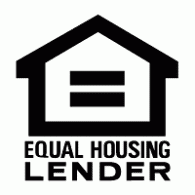Arizona Asset-Backed Loans

As the winds of financial change continue to blow, Arizonians seek flexible solutions to secure their economic stability. Enter asset-backed loans – the key to unlocking opportunities, and overcoming monetary hurdles. In the Grand Canyon State, the power of asset-backed loans is unparalleled, providing individuals, and businesses with the leverage needed to navigate uncertain terrain […]
Asset Depletion Loans: A Comprehensive Guide

Introduction Asset depletion loans, also known as asset-based loans or asset dissolution loans, offer a unique borrowing solution for individuals who may not have a traditional income but possess substantial assets. These loans calculate creditworthiness based on the borrower’s liquid assets rather than regular income streams, such as salaries or wages. How Asset Depletion Loans […]
Doctor Loans Program with Minimal Down Payments

Creative Solutions for Doctors with Negative Savings to Acquire Homes with Minimal Down Payments Considering the Doctor Loans Program by Blake Mortgage. Would this be the answer for physicians with negative savings? The dream of owning a home may seem out of reach for doctors with negative savings due to hefty student loans and other […]
The Top 5 Misconceptions About VA Home Loans

Are you a veteran looking to buy your primary home? It’s exciting, but there may be misconceptions surrounding VA home loans. Therefore, it’s vital to get the facts about these loans upfront. You will make the right decision by knowing the facts about VA loans. What type of property can you qualify for? How much […]
Credit and Lending

Why This Blog? Hi, my name is Harry Panosian, and I have been in the mortgage business for over 25 years. I worked for a mortgage banking firm early in my mortgage banking career. Since 2002 I’ve owned Blake Mortgage, NMLS ID 150459, an Arizona-licensed mortgage broker specializing in residential mortgages. I’ve always wanted to […]
How to Shop for A Mortgage

Shopping for a mortgage can be daunting. But it’s essential to securing a home loan that fits your needs and budget. The Consumer Financial Protection Bureau (CFPB) has created a “Home Loan Toolkit” to help you navigate the process. This guide will break down the critical steps in the shopping process. Including understanding the different […]
Rental Property Mortgage: A Complete Guide

Investing in rental property can be a lucrative financial decision for those with the resources to do so. However, one of the critical factors in successfully owning a rental property is securing the right mortgage to finance it. This guide will discuss the various loan options available, the application process, down payment requirements, closing costs, […]
Mortgage Rates Rising!

Mortgage rates in Phoenix, Arizona have spiked up to almost 7%, the highest level over a decade, causing concern among homeowners and potential buyers alike. Inflation is a crucial factor impacting mortgage rates and the real estate market in Phoenix, AZ, and it’s essential to understand the implications of these trends. This article will explore […]
“No Cost Loan?” There’s No Free Lunch!

Over the years, lenders have marketed a specific type of loan generically known as a “No-cost loan.” There is no free lunch! What do I mean by that? First, there are many costs associated with originating the loan. It includes: The loan estimate and closing disclosure break down these fees so the borrower can see […]
Bank Statement Loans for The Self Employed

In recent years, bank statement loans have become increasingly popular as an alternative form of financing. This type of loan is for those who may not meet traditional lending criteria. These loans are specifically designed for self-employed individuals, small business owners, and entrepreneurs. Who have difficulty providing the necessary documentation to prove their income. What […]





